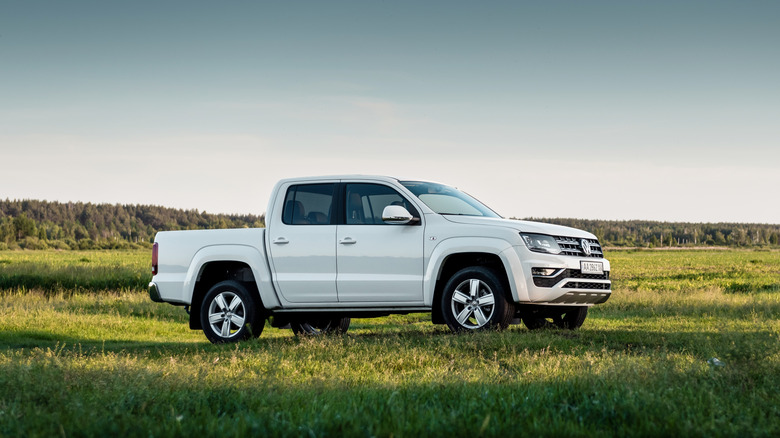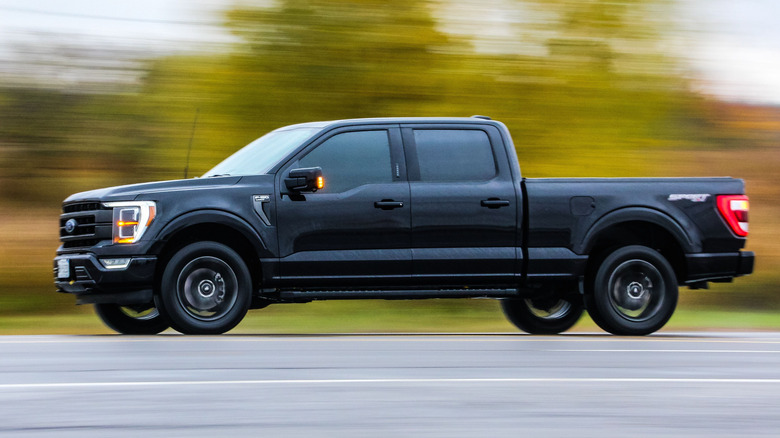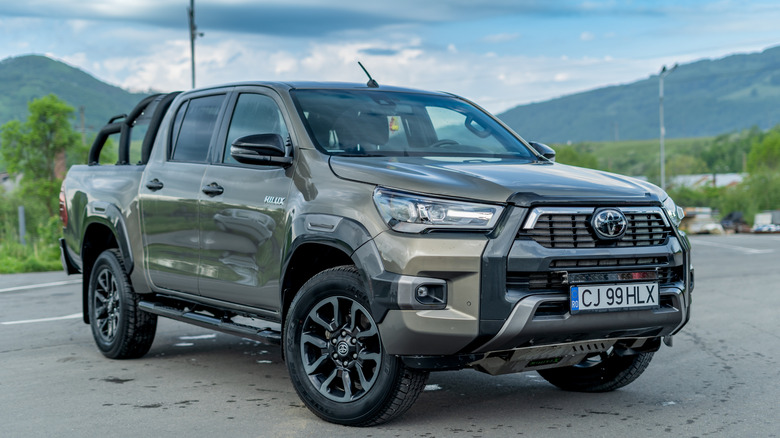Why Pickup Trucks Aren't Popular In Europe
In the United States, pickup trucks are as much cultural icons as they are vehicles. In 2022 alone, they constituted roughly 20% of all U.S. car sales, with models like the Ford F-150, Chevrolet Silverado, and Ram 1500 topping sales charts. For many Americans, trucks are the quintessential blend of utility, comfort, and status, bridging the gap between workhorse and everyday driver. The U.S. is home to many pickup trucks that were ahead of their time, and automakers continue to set new performance standards while developing luxury features, which only strengthens their appeal.
However, that dominance hasn't translated to Europe, where pickups are viewed as business transports rather than lifestyle vehicles. Pickup trucks held less than 1% of the market across the continent in 2022. Culturally, they occupy a similar niche as compact vans, bought more for their load-carrying ability than anything else. This view shapes both buyers' behavior and what automakers are pushing for in Europe, where SUVs and hatchbacks are far more desirable.
Europe's streets sizes and fuel prices make pickups impractical
One of the biggest barriers to truck adoption in Europe is simply size. U.S. roadways and parking spots are built to accommodate broader vehicles, with 10 to 12-foot wide standard lanes. By contrast, many European lanes are just 8 to 10 feet across — barely wider than a Ford F-150. Squeezing a full-size pickup into narrow streets, tight roundabouts, or compact parking garages can be more of headache than it's worth. Interestingly, many of the continent's most popular pickups aren't sold stateside; for example, Volkswagen doesn't offer a pickup truck in the United States.
Fuel costs compound the problem. Gasoline and diesel prices in Europe are often twice that of U.S. averages. Big, gas-hungry trucks look less appealing when an efficient hatchback can haul goods while costing less to operate. Europeans also tend to favor vehicles that fit urban lifestyles – think compact SUVs or multipurpose vans as opposed to big, body-on-frame pickups.
It's the opposite of the U.S., where stricter fuel economy rules in the late 2000s pushed automakers to position mid-size pickups as versatile alternatives to SUVs. Trucks in America fill the towing and hauling gap that crossovers can't cover. However, that need doesn't resonate as strongly across the pond.
Will Europe ever embrace the pickup?
In the past few years, pickup truck interest in Europe has gone up. Sales for the Dodge Ram 1500 alone went up by 20% in 2023, while the Toyota Hilux, Volkswagen Amarok, and Ford Ranger have sustained similar popularity. There is room for specific lifestyles, especially among rural drivers or those who need a truck for weekend use. Additionally, these once utilitarian vehicles are adopting more luxury features to appeal to high-end buyers, with many pickup truck brands now possessing stunning interiors.
While there are signs that pickup interest is growing in Europe, there are still problems to overcome. Experts say that growth will be slow, but a cultural change mirroring the U.S. doesn't seem likely. Pickups will remain a niche choice unless infrastructure, fuel prices, and buyer attitudes can change. As a whole, drivers still consider them too big, impractical, and not in line with Europe's environmental protection policies.
That said, the SUV boom might provide a blueprint. Should automakers repackage pickups with sleeker styling, hybrid drivetrains, and a more "family-friendly" image, they may carve out a larger niche. Until then, Europe's love affair with small, efficient cars will keep pickups parked firmly on the sidelines.


